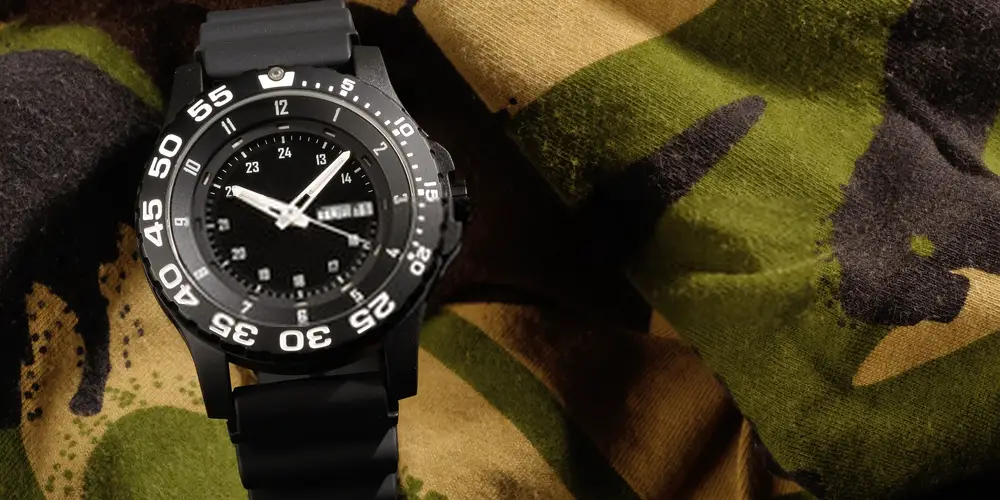Watches with a chronograph function, or complication if we’re getting precise about the terminology, can instantly make you stand out from the crowd. The subdials add a layer of complexity to the timepiece that is just not present in a “normal” watch. However, chronograph watches are loved by watch collectors because of the additional functionality that they offer. They put a mechanical stopwatch on your wrist that, depending on the movement, is capable of measuring hours, minutes, seconds and even tenths of a second without preventing the watch from displaying the actual time. You’re basically getting two watches in one as the chronograph module inside the watch is its own independent mechanism.
All About the Chronograph
Chronographs are immensely attainable as well since companies like Swatch have been able to make very affordable models. While true enthusiasts might only prefer mechanical chronographs, the democratization of this technology has enabled people to even opt for chronographs as mere fashion statements and not necessarily for their practicality.
What Are Chronograph Watches

They’re not exactly what you would consider minimalist watches since the sub-dials take up considerable space inside the case. It’s not wasted space by any stretch of the imagination. They’re actually quite complicated to build and some of the better-known chronograph watches are true feats of mechanical engineering.
The invention of the first modern chronograph in 1816 is attributed to French horologist Louis Moinet but some of the earlier versions actually had a small pen fixed to the index so that the pen mark’s length could be used to see how much time had elapsed. One of the very first applications of the chronograph function was actually to measure the time elapsed during horse races.
Though widely considered as a complication for luxury watches, the chronograph function was developed to serve as a tool, which is why aviators swear by it to this day. They are able to precisely measure the time and make fast calculations using the watch on their wrist. Chronographs assumed a position of importance in other fields as well which also rely on precise repeated timing such as automobile racing and naval submarine navigation. They largely exist in the form of wristwatches now but in the early 20th century, pocket chronographs had gained quite a lot of popularity.
A modern precision chronograph begins recording time at the push of the start button which is normally at the two o’clock position. Pushing the same button stops recording time. When the button is pushed, a series of three wheels begin to turn with the smallest having a revolution time of one second and the other two having revolution times of sixty seconds and sixty minutes respectively. There can be additional wheels in more precise chronographs. These wheels interact with each other to record the time elapsed since the start button was pressed.

Why A Chrono Watch Is Special
The more complicated a mechanical watch, the more expensive it’s going to be. Yet a precision chronograph, despite its mechanical complexity, is much more attainable for customers as compared to other complications such as a perpetual calendar, minute repeater or tourbillon. Simply based on the mechanism, the value proposition here is exceptional.
They have also cemented their place as symbols of timeless elegance, thanks in part to legends like Ayrton Senna and Steve McQueen immortalizing them on the race track and the big screen. They’re special because underneath all of that history and incredible engineering lies a tool that’s as useful today as it was centuries ago. Modern chronographs even include functions like a Tachymetre to measure the average speed.
Watchmakers have not stopped innovating and chronographs now are more capable than ever before. Flyback chronographs are special in their own right as the timing hand is able to reset, or fly back to zero, rapidly. Normally, the sweeping second hand is stopped in order to record the time and then started again at the same spot on the dial. You either do that or reset by spinning the second hand clockwise to zero again. With the flyback mechanism, a quick reading can be taken and the chronograph reset even if it requires a counterclockwise flyback.
Noteworthy Men’s Chronograph Watches
Breitling Navitimer

Breitling is the preferred chronograph watchmaker for many aviators and with good reason. The Navitimer was launched more than six decades ago and it’s still a force to be reckoned with. It combines the chronograph complication with many different functions that can be controlled with the rotating bezel. Imagine being able to perform currency conversions, fuel consumption calculations and more with a mechanical timepiece. No wonder it soon became the official watch of the Aircraft Owners and Pilots Association.
Omega Speedmaster Professional
Few stainless steel chronograph watches have elevated themselves to style icon status as the Omega Speedmaster did. Even though it had already been out for a few years back in 1965, Omega’s decision to add a colored bezel inlay to the Speedmaster Professional instantly transformed its fortunes. As if that wasn’t enough, the Omega Speedmaster later became the first watch on the moon as Buzz Aldrin donned it during that historic mission. It has since been nicknamed “Moon Watch” and eventually endorsed by NASA as the timepiece of choice for outer space. The movement has proven itself to be reliable enough to even operate uninhibited in the most extreme of conditions known to mankind.

IWC Pilot Watches
The IWC Pilot watches were, as the name suggests, made for civil aviation pilots way back in the 1930s. They were exceptionally durable and resistant to fluctuations in temperature ranging from – 40 degrees Celsius to + 40 degrees Celsius. They were also anti-magnetic. IWC is credited with popularizing the cockpit-instrument look for chronographs, the design language is consistent across the entire IWC Pilot lineup. It offers a wide range of chronographs paired with perpetual calendar, annual calendar and dual time zime complications.
Bulgari Octo Finissimo

A recent addition to the legendary Octo Finissimo line, the Bulgari Octo Finissimo Chronograph GMT Automatic lays claim to the title of being the thinnest mechanical chronograph in the world at just 6.9mm. It retains the familiar angular case design that has long been representative of Octo Finissimo watches. Measuring 42mm, it’s made from sandblasted titanium with a matching dial and bracelet. Inside, there’s a record-breaking 3.3mm Caliber BVL 318 movement, which is the thinnest automatic chronograph movement ever made. It’s even got a GMT function which defies reality in a movement this thin.
Tag Heuer Monaco
The Tag Heuer Monaco has the unique distinction of laying claim to two world firsts. It was the first water-resistant watch with a square case and also the first automatic chronograph. It is the true embodiment of a timeless classic that has held its own against the competition for decades and will like to do so for decades to come. Its unique case design and color combination makes it one of the most instantly recognizable watches in the world. It was originally introduced to commemorate the Monaco Grand Prix back in 1969. Even after it was reintroduced decades later, Tag Heuer retained the vintage Heuer branding on the dial to pay homage to its storied past.
If you’ve enjoyed this article, please read more at Spot the Watch.










